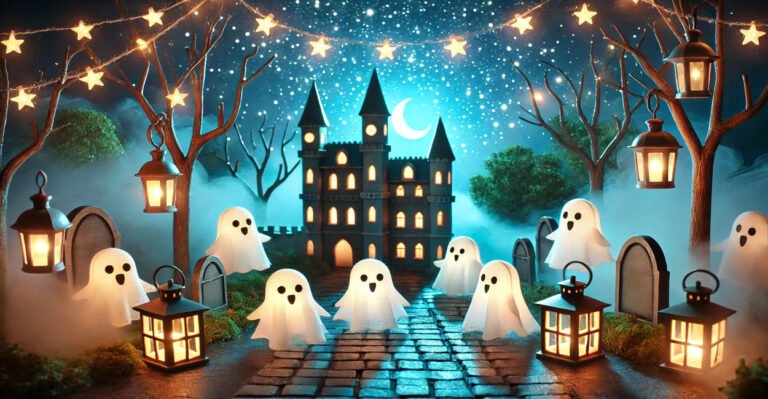How Jack and the Beanstalk Transformed Classic Fairy Tales
Magical events, fascinating characters, and ageless lessons abound in fairy tales, which enthrall viewers of many generations. Still, Jack and the Beanstalk is usually one of the most famous fairy stories that come to mind. Why is it? What is it about this straightforward tale of a lad and a centuries-standing beanstalk? More crucially, though, how did it change the realm of classic fairy tales? Examining Jack and the Beanstalk’s journey and how it became a cultural landmark and shaped the framework of many fairy tales that came after, this essay will help you understand
Jack and the Beanstalk’s Continual Allure
Though it is deceptively simple, Jack and the Beanstalk has strong ideas and images. Fundamentally, it is a story of risk and reward in which Jack, the hero, ascends a magical beanstalk to confront a monster and grab riches. Though the story is simple, it has had an exaggerated influence on fairy tale development. What, though, is it about this particular story that provides such endurance?
The Fundamentals of a Classic Fairy Tale
Any excellent fairy tale revolves around some universal themes: a hero, a villain, and a transforming trip. Jack and the Beanstalk presents a novel viewpoint while touching on all of these areas. Jack is an impoverished lad who has to take a big risk to change his situation; he is not a usually heroic figure.
Inspired later in many other fairy tales, the beanstalk itself serves as both a tangible and symbolic link between the mundane and the spectacular. Jack’s meeting with the giant in the clouds stands in for the hero’s confrontation with a more powerful force—a timeless fairy tale conflict that has resonated for millennia.
Jack and the Beanstalk differ, nevertheless, because of the fallout from his choices. Many classic fairy tale heroes avoid, being confronted with moral conundrums, hazards, and rewards that many times are not evident. This lends the story a degree of complexity that enhances its reputation in the realm of folklore.
Jack and the Beanstalk’s Journey to Become a Fairy Tale Mainstay
Jack and the Beanstalk started as an English folk story, but its impact went much beyond its birthplace. It developed into a fundamental narrative in the fairy tale canon, inspiring rewritings and adaptations all around.
From Folk Story to Classic Tale
Early English Folklore Origins: Jack and the Beanstalk’s roots date back to the early eighteenth century. Before it was officially recorded, the narrative was most likely passed on orally. Early forms varied depending on the area and were raw and unvarnished.
Jack and the Beanstalk as we know it was first popularized in 1890 by Joseph Jacobs in his English Fairy Tales collection. Many of the famous elements—the magic beans, the monster, the heroic escape—which have since become the defining traits of the narrative—added by Jacobs were absent.
Global Reach and Variations
The story evolved regional variances as it traveled to many civilizations, particularly Europe. Adapting to the local legend, Jack and the Beanstalk combined elements of various customs with its central message intact. Its versatility enabled it to become one of the most enduring fairy tales available in many countries.
Important Ideas Affecting Jack and the Beanstalk and Other Fairy Tales
Jack and the Beanstalk’s success depends on its themes rather than alone its story. Many more fairy tales that followed it have been inspired by these ideas, which range from ambition to risk to moral teachings.
Jack’s Reluctant Hero: His Journey
Jack does not come naturally in bravery. He does not come upon a secret treasure or inherit a supernatural weapon. Rather, his bravery is typified by his choice to scale the beanstalk, a task requiring both bravery and desperation. Jack moves ahead just by chance and will, unlike other fairy tale heroes who begin with a specific goal.
Later fairy tales, particularly those stressing personal development over magical benefit, began to rely on this modest hero paradigm.
The Giant: An Other-Like Villain
Though Jack and the Beanstalk’s giant is a traditional adversary, his larger-than-life presence makes him especially unforgettable. Representing a great force, the giant signifies the perils of greed, extravagance, and unbridled power, therefore transcending mere physical obstacles. His antagonistic character prepared the ground for later fairy tale villains, many of whom would also reflect society’s problems including corruption, injustice, and dictatorship.
Greed and Consequences: Ethical Lessons for Every Era
Jack and the Beanstalk’s fundamental concern is the notion of repercussions. Although Jack’s choice to trade the cow for magic beans seems dumb at first, as the narrative goes on the results of his actions show themselves dramatically. Ultimately, Jack’s deeds result in a sort of justice since the villain—the giant—paid the cost of his avarice and despotism.
Other fairy tales where the wrongdoers are finally punished and the heroes are rewarded for their bravery, ingenuity, or goodness have been affected by this concentration on consequences and moral clarity.
European Folklore Jack and the Beanstalk
Jack and the Beanstalk did not remain limited within England. Local customs, attitudes, and narrative traditions changed the story as it traveled to Ireland, the Netherlands, and Sweden. These versions guaranteed the story’s place among Europe’s most cherished tales, therefore enabling an even more international character.
The Swedish Spin
In Sweden, Jack’s climb up the Beanstalk is seen as a metaphorical trip to a higher knowledge while variants of Jack and the Beanstalk highlight the magical features of nature. Swedish adaptations similarly investigate ideas of battle against natural forces, presenting the giant as Jack’s uncontrollable factor he must overcome.
Dutch variations
Jack and the Beanstalk have been spun into local mythology in the Netherlands, where the giant is sometimes portrayed as a more tragic character. Some Dutch retellings emphasize Jack’s personal development from confronting danger and making difficult decisions, so stressing less on the money gains and more on his personal development.
The Irish Link
The narrative has great links in Ireland to Celtic ideas of bravery and giants. Irish adaptations of Jack’s trip usually show him as a personal metamorphosis in which the ascent of the beanstalk represents an old rite of passage. The story seems even more entwined with Ireland’s rich oral storytelling legacy since the giant in these stories is usually connected to old mythology.
Final Thoughts
Jack and the Beanstalk has fundamentally changed the way we view and pass on stories from its modest origins as an English folk story to its global reputation as one of the most significant fairy tales ever produced. Particularly in nations like Sweden, the Netherlands, and Ireland, its universal themes of risk, bravery, and justice have shaped decades of storytellers throughout Europe.
Jack and the Beanstalk changed the fairy tale genre by combining parts of magic, adventure, and moral clarity, therefore encouraging many modifications and retellings. From the way the hero’s journey was structured to the way giants and villains were portrayed as emblems of greed and excess, almost every fairy tale that followed bears evidence of its impact. Still one of the most cherished and timeless stories in the fairy tale canon today.

Storieslet is a storytelling platform dedicated to bringing joy, learning, and imagination to readers of all ages. From bedtime stories for kids to fairy tales, moral lessons, and thrilling adventures, it offers a diverse collection of captivating narratives. Each story is carefully crafted to entertain, educate, and inspire young minds. With a blend of classic and modern tales, Storieslet ensures a magical reading experience for families. Discover enchanting stories and timeless lessons at Storieslet!







